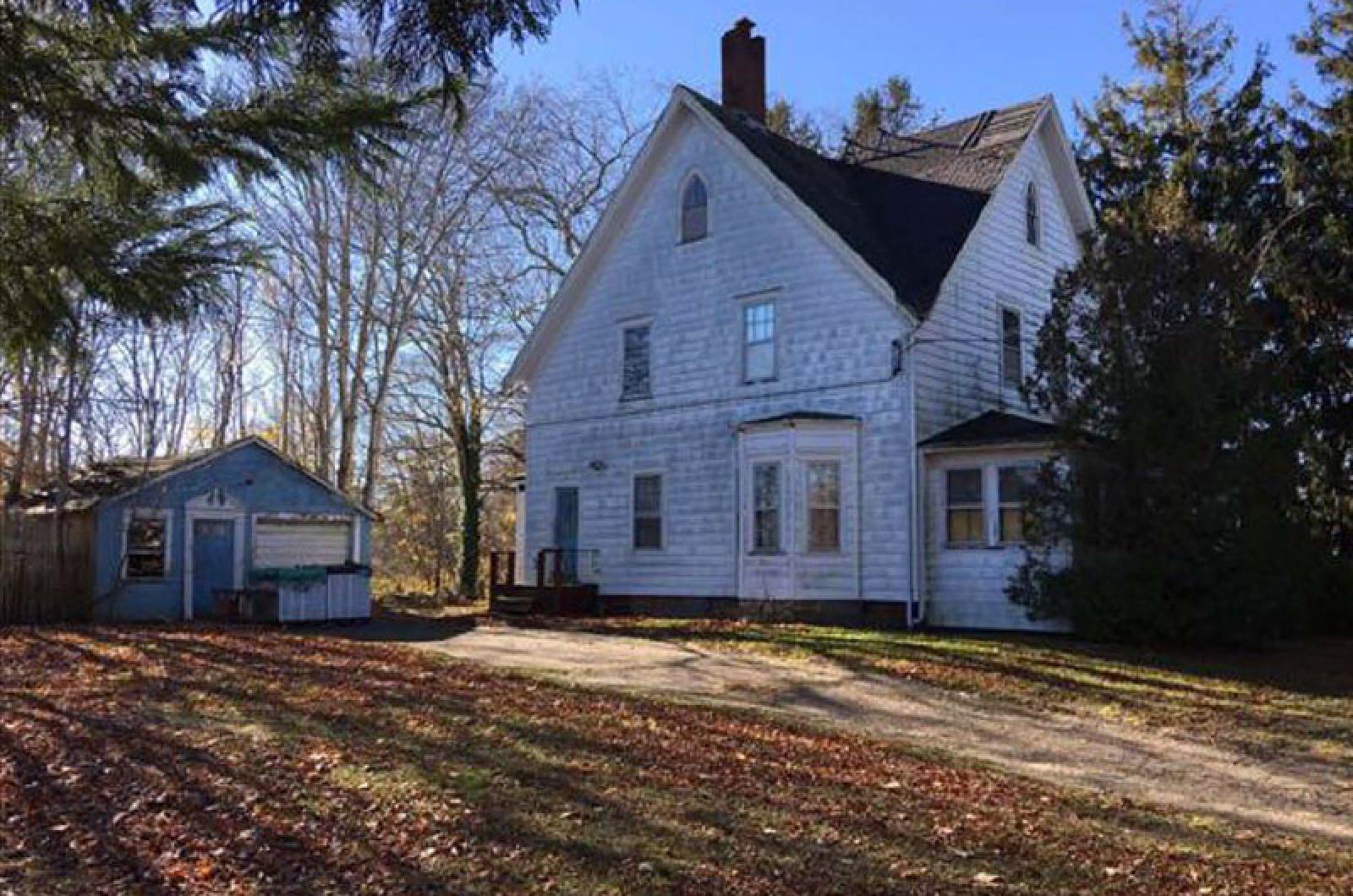The Martha’s Vineyard Commission will review a proposal by the Island Housing Trust to demolish a historic home on West William street in Vineyard Haven, where the trust wants to build affordable housing.

The large two-story house across from the Tisbury School was built in 1880 and includes Gothic features such as steep gabled roofs and arched windows, but has deteriorated over the years. The project came before the commission as a potential development of regional impact (DRI) because the house is more than 100 years old.
At the commission meeting last Thursday, DRI coordinator Paul Foley noted a rare American elm on the property, which he said may be of scientific interest for having survived Dutch elm disease.
The trust has made an offer to buy the property, where it plans to build multi-family affordable housing. Trust director Philippe Jordi said that restoring the house was not an option. “We would walk away from it if we had to restore the house,” he said. “It’s in complete disrepair.”
Commissioners sought more information about what the trust plans to do with the property, which could have three lots under town zoning rules.
“I want to know what affordable housing, how much,” said Douglas Sederholm. “I don’t need detailed architectural drawings, but I want to know what is going to happen.”
Linda Sibley drew attention to a recently proposed demolition and rebuild of a historic house on Franklin street, which underwent meticulous review by the commission this spring and was twice revised before being approved with conditions in May.
“How can we not hold a public hearing?” she said.
In deciding whether to review the proposal, commissioners used a new process for determining a building’s historic significance, assigning points based on various criteria such as age and historic context. In the end, 12 commissioners agreed the building was significant enough to warrant review, with commissioner Ernie Thomas dissenting and Clarence A. (Trip) Barnes abstaining.
A public hearing has not yet been scheduled.
In other business, the commission decided not to review a proposed addition to the Net Result at the Tisbury Marketplace. The project involves the addition of a 720-square-foot second floor on part of the building, and the replacement of two honey locusts on the property with two red maples. The addition would be used mostly for storage and office space according to the plans.
The project was referred to the commission by the Tisbury planning board because the Tisbury Marketplace was considered a DRI. But commissioners struggled to determine whether the project was in fact within their jurisdiction.

Midway through a roll-call vote on whether to approve the project as presented, Mr. Jason questioned whether a vote was appropriate, pointing out that the marketplace was built at a time when Tisbury and Edgartown were not part of the commission. Mr. Foley confirmed that the marketplace has been reviewed in bits and pieces since 1987, but he said it has generally been treated as a single DRI.
The commission voted 8-1 not to conduct a review, with five members abstaining.
Looking ahead, Josh Goldstein suggested developing a procedure for dealing with projects in the future that involve multiple DRIs. Mr. Barnes moved to reconsider the vote, but the motion was not seconded. Mrs. Sibley agreed that clarification was in order, although she didn’t think the vote itself would be a problem.
“Worst-case scenario, we just approved something that we didn’t need to approve,” she said.
Also on Thursday, the commission unanimously approved a series of amendments to the Island’s coastal district of critical planning concern (DCPC), which resulted from amendments to the Squibnocket Pond district bylaw that Chlmark voters approved at their annual town meeting in April. The changes allow for relocated or reconstructed roadways, with approval required by the MVC and Chilmark conservation commission. But if voters approve such a project by a two-thirds majority vote at a town meeting, then only MVC review is required. The changes also allow for pedestrian access along roadways, as long as the access for vehicles doesn’t exceed 10 feet in width, and the total width doesn’t exceed 15 feet.
The amendments help clear the way for the stalled Squibnocket Beach restoration project, which involves building a raised causeway to the homes at Squibnocket Farm, relocating a town parking lot, and other features.
Approval from the commission was needed because the pond district also lies within the Island’s coastal DCPC, which the commission designated in 1975.
Mr. Hancock argued that the changes were slightly more restrictive than before, given the two-thirds majority vote now required for reconstructed or relocated roadways in the district.
“We are certainly not losing control,” he said.







Comments (3)
Comments
Comment policy »